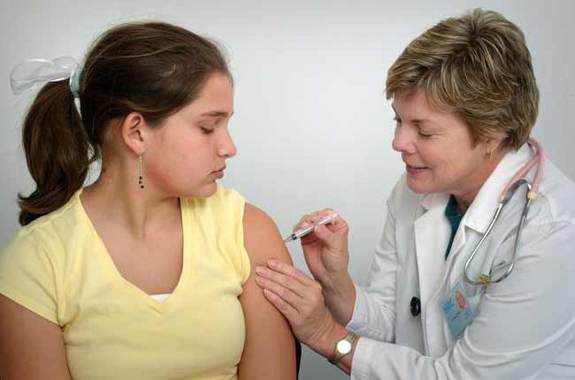Everyday Evolution Revealed in Flu Shots

When you head out to get your annual flu shot, you might be thinking about the brief prick of pain or possible side effects. Maybe you're anticipating feeling invincible around sniffling children or crowds of commuters on the subway.
But are you thinking about evolution?
After all, it's why you're getting jabbed.
Every year, a team of health experts designs a vaccine to protect against the three circulating flu strains they predict will be the most prevalent that season. The vaccine helps your body make antibodies to fight those selected strains. But flu viruses replicate quickly and have a high rate of genetic changes, or mutations, so the helpful antibodies you may have developed to a previous year's strains often can't attach to this year's mutated viruses. Such adaptation helps the flu virus thrive in its environment. It survives, infects and multiplies. In other words, it evolves. And the flu vaccine must evolve each year to keep up.
Evolution in Action
Evolution is present in our daily lives, like when we catch or combat the flu virus. Evolution also plays a role in some of our most pressing global health problems. The human immunodeficiency virus (HIV), for instance, evolves faster than the immune system can keep up with it. Researchers funded by the National Institutes of Health study the effects of evolution on human health to find ways to prevent disease.
Many bacteria have developed resistance to the most common drugs we have on hand to treat them. Methicillin-resistant Staphylococcus aureus (MRSA) is an antibiotic-resistant bacterium that causes potentially deadly skin infections. Even bacterial colonies on your hands can evolve to resist antibacterial soaps and hand gels.
Sign up for the Live Science daily newsletter now
Get the world’s most fascinating discoveries delivered straight to your inbox.
Sarah Tishkoff, an evolutionary geneticist at the University of Pennsylvania, works with malaria, a mosquito-borne disease that causes more than a million deaths globally every year, and kills a child every 30 seconds. The parasite that causes malaria is becoming resistant to the drugs normally used to fight it off.
Tishkoff is looking for the specific genetic mutations that help parasites survive in the presence of malaria drugs. What she finds could lead to more robust treatments.
Delving into DNA
Evolution influences our health beyond bacteria and viruses. It may explain why some people have lactose intolerance, or the inability to digest milk. Many adults around the world have lower-than-normal activity of an enzyme called lactase, which breaks down milk products. Tishkoff analyzed DNA samples from different African tribes and discovered that populations whose recent ancestors were pastoralists—meaning they kept domesticated cows and relied on dairy for nourishment—had evolved a variation in the gene that produces lactase, allowing them to digest milk.
At the University of Oregon, evolutionary biologist Joe Thornton is focusing on endocrine disruptors, chemicals in our environment that mimic human hormones and cause fertility problems and other health issues. Thornton extracted DNA from octopi, lampreys and snake-like hagfish because they all share an ancient common ancestor with humans. Investigating how evolutionarily older genes respond to different hormones could tell us more about why our genes react the way they do.
This Inside Life Science article was provided to LiveScience in cooperation with the National Institute of General Medical Sciences, part of the National Institutes of Health.
Learn more:











